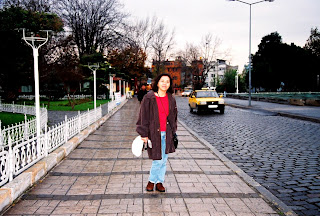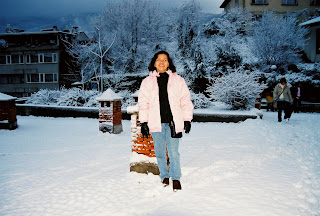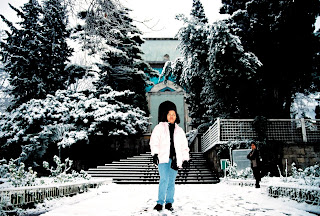

ISTANBUL is the only metropolis in the world that situated on two continents. It is located on the shores of the Bosphorus and bordered by Black Sea to the north and Marmara Sea to the east, covered an area of nearly 6000 sq km., extending over European and Asian sides of Bosphorous. There are about 13 millions of population resides at this major port and trade center of the country. Istanbul was a popular capital of many ancient Empire like Roman, Byzantine and Ottoman Empire during the period between century 330- 1453 AD and today it is the largest and most important city of The Republic of Turkey. The city, lies on Bosphorous Straits and encompasses the natural harbor known as Gold Horns, tempered by Mediterranean climate and brimmed with fine monuments and artifacts of Byzantine and Ottoman era , has become an interesting and impressive sight for travelers.


The Blue Mosque which is also known as Mosque of Sultan Ahmet was built in 1616 with 6 unique minarets. It is 3-sides surrounded by courtyards with 5 portals and portico covered by 30 cupolas and supported by 26 marble columns. The hexagonal fountain at the center of the main courtyard of Sultan Ahmet Blue mosque.



The lighted bulbs circulated inside the Blue Mosque and the painting of The Fresco of Madonna and Christ child dating in 10th century at the main shrine of Hagia Sophia Museum.


Hagia Sophia Museum, the master piece of the Byzantine architecture, is the only construction that still stands in an excellent state of preservation. It was built in 6th century by Justinian and was the world's largest cathedral for one thousand year. It is the best known Christian Church in Istanbul. The church was converted into a mosque in 1453 by adding a Mihrab to face towards Mecca with all other original interior and structure remained untouched.


A Sherbet seller in front of Hagia Sophia which originally was a Church, later a mosque and now Ayasofya Museum


Hippodrome, the center of Chariot races, was the scene for the political struggles and the uprisings in the capital City of Empire. The construction of the cavea started in the reign of Emperor Septimus Severus and completed 100 years later under the Constantine the Great. The stones from the structure were used in the construction of the Blue mosque. The site of Blue mosque and Hagia Sophia or Ayasofya Museum are located next to the ancient Hippodrome.



The Political center of empire during Byantine period dating back to about 2000 years ago. The historic structure of Egyptian Obelisk has a 6 meter base fully covered with relief carving.


The 3 monumental columns and a fountain are the only remains from Hippodrome
(1) The 32 meter high Constantine's column which was made of sandstone ashlar masonry and was restored in 959 AD (2) The obelisk of Theodosius bearing with hieroglyphic inscription was a 25m high Egyptian obelisk, erected in 1450 BC . (3) The Serpent's Column with a height of 5.5 meter was also known as Spiral Column. It was set up in 479 BC. (4) The German Fountain was a present from German Kaiser Wilhelem II to the Ottoman Dynasty.





A Kebab food shop and the souvenir stall at Grand Bazaar.



Yerebatan Sarnici, the underground cistern has 336 columns to ensure water supply during siege in ancient time.


Belly dance performance at Istanbul nightclub.




The beautiful belly and whirling dervishes dancers


Turkish folklore dances


Istanbul at dusk.























